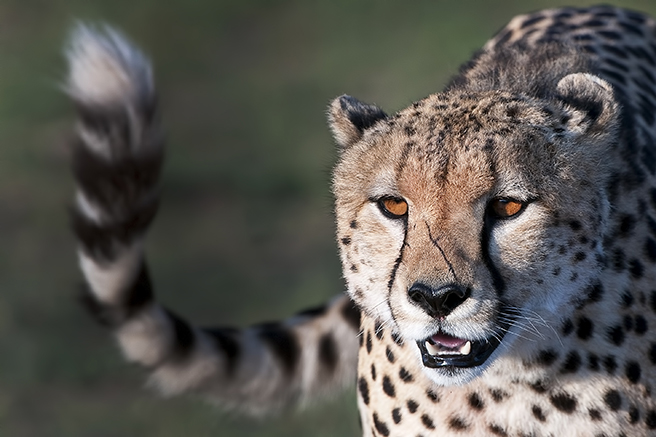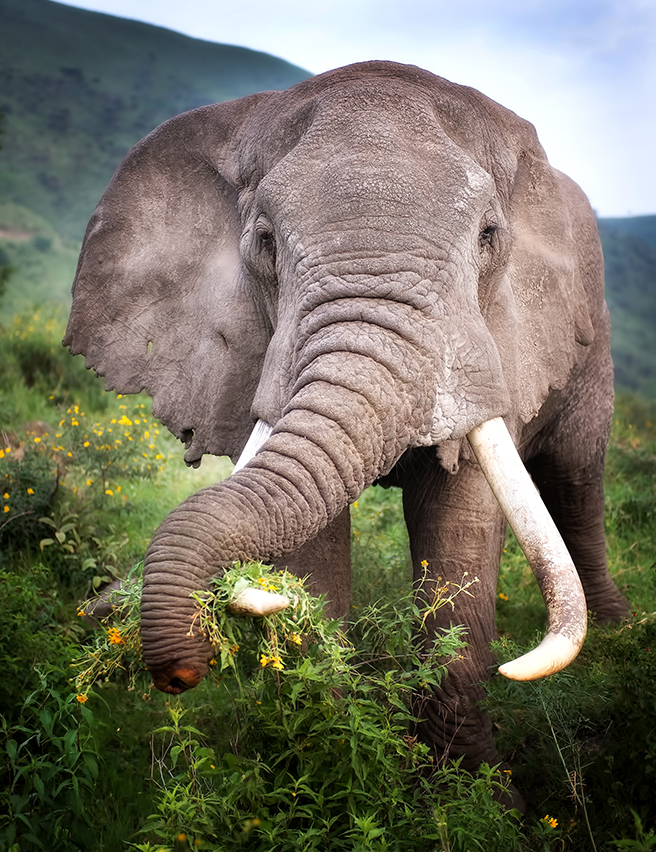Old Friends

One of the great benefits of being a frequent visitor to the East African game reserves is the opportunity to recognize and become acquainted with specific animals.
One of my oldest “friends” is a large male cheetah in the southern Maasai Mara. He sports a diagonal, jagged scar across the center of his face, and it is this distinctive mark that makes him so easy to identify. It’s why I know with certainty that I’ve crossed his path many times during my visits to Kenya. Despite his disfigurement, he is a beautiful and graceful animal… and based on his girth, I’d say he is one hell of a hunter. A tour of the southern Mara is now an incomplete experience without a sighting of him.

A unique scar makes this male cheetah easily identifiable.
But my most memorable friend resides in the Ngorongoro Highlands of Tanzania. We first met late on a February afternoon in 2010 on the perimeter road that circles the top of Ngorongoro Crater. I’d just spent a full day photographing wildlife on the Crater floor and had packed away almost all my gear for the rough ride back to camp. So when my driver stopped the Land Cruiser at the base of a hill to admire a bull elephant I was caught unprepared, with only an infrared camera available and within reach. The elephant was standing on a steep slope… an unusual spot for sure, because his great bulk and flat-bottomed feet could cause him severe balance problems on the precipitous terrain. But the young bull seemed strangely and completely at ease despite the steepness of the incline.
The second anomaly was the elephant’s trunk, which was curiously abbreviated. After a few minutes of observation the animal’s predicament became clear. He’d lost the business end of his trunk at some point in the distant past. He was most likely the victim of hyenas at a young age, maybe lions, or perhaps even an unfortunately placed snare. Regardless, the primary vehicle for delivering food to his mouth was essentially inoperable. But the elephant had found a way to survive and thrive. By braving the steep slopes he was able to use the elevation differential to his advantage. With the grass on the hillside at mouth level he could access the bushes and tall grass that would keep him alive. He was nearly full grown, and judging by his body mass, he was completely healthy. I think the attached black and white photograph offers compelling testimony to his will to live.

Despite a truncated trunk, this bull elephant has learned how to thrive and remain healthy.
I saw this extraordinary animal again from a distance in early 2012, but it was not until February of 2014 that I was blessed with another very close encounter with him. The big fellow was parked along the road descending to the crater floor, peacefully eating his way through the tall grass. He was once more on a steep slope, completely oblivious of the Land Cruisers rolling past just a few meters away. We stopped for a few minutes to take some photographs, but after about a dozen clicks I put the camera away to better experience the utter joy of being in his presence.
He would be an exceptionally beautiful elephant even without his disability, but the implausibility of his survival and the miracle of his impeccable health place him in a special, elevated category. Not only has he overcome a physical challenge that would cripple many animals, he seems to bear no ill will against the world. He was patient and tolerant with the tourists buzzing past, and eventually eased to within arm’s reach of our vehicle before we continued our journey into the crater. He is indeed an old friend, and I hope his life is long, happy and blessed with fatherhood many times over. He deserves no less.
Photos by Billy Dodson